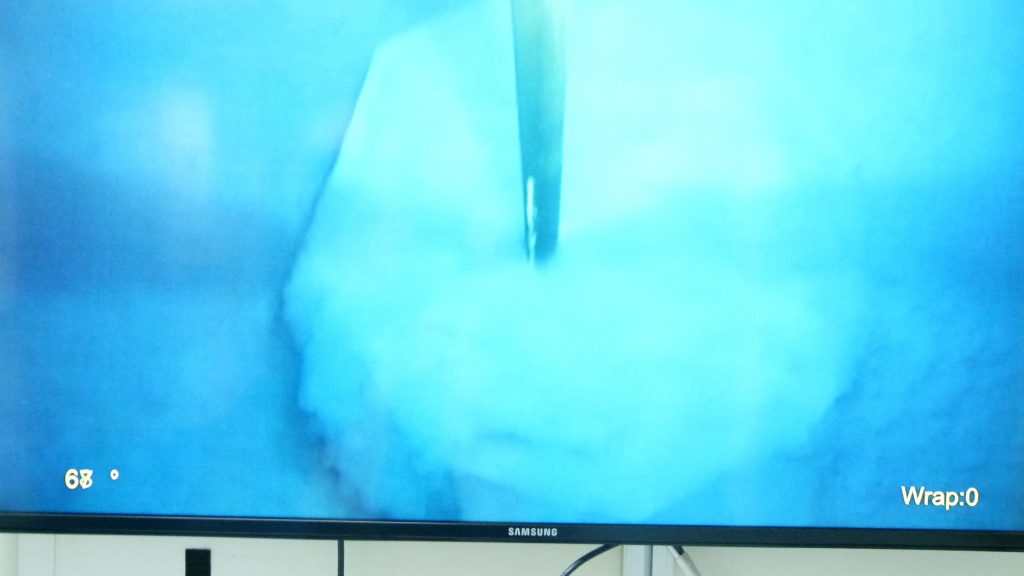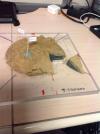
Drill-Hole Forever?/ Bohrloch Für Immer?
At the beginning of 2017 the JOIDES Resolution is still working on Yinazao (Blue Moon-) seamount. Our visitors may ask: “What are they still doing there?” Well, there is an easy answer containing some details. We’re preparing the drill hole N° 1492D (3666 mbsl.) near the top of the seamount for further investigation (see flag in model).

For this purpose, a re-entry cone has been adjusted right above the hole and a special casing has been applied into the hole (see photos of the re-entry cam).

The four parts of the casing, each about 10 m long, have special slotted, silicon-carbide-particulated and perforated walls, so that we have to speak about a screened casing. These special constructions allow a re-entry into the drill hole for further research without drilling a new hole. The bottom of the casing will at last be sealed by a plug. Research vessels visiting the site again in this case need not necessarily be drilling ships like the JOIDES Resolution. Scientists can use such a prepared hole for example for the analyzation of fluids, gases or temperature at the site. IODP expects requests from scientists interested in such measurements shortly after the end of expedition 366.
Bohrloch Für Immer?
Zu Beginn des Jahres 2017 ist die JOIDES Resolution immer noch am Yinazao-(Blue Moon-) Seamount zugange. Der aufmerksame Beobachter unserer Aktivitäten wird sich fragen: “Was machen die denn da immer noch?” Nun, es gibt eine einfache Antwort darauf, die allerdings einige Details enthält: Wir bereiten das Bohrloch mit der Bezeichnung 1492D in 3666m Tiefe (siehe Flagge im Modell) für eine wiederholte Untersuchung vor. Für diesen Zweck wurde eigens ein sogenannter “Wiedereintritts-Konus”angefertigt und exakt über dem Bohrloch platziert (siehe hierzu die Bilder der Unterwasserkamera). In das Bohrloch wird ein sog. Casing, ein Bohrrohr mit spezieller Wandung eingebracht. Die Wand des Bohrrohres ist außen geschlitzt, mit filterndem Silicium-Karbid gefüllt und innen perforiert. So können Flüssigkeiten und Gase aus dem Schlammvulkan in das Innere des Bohrrohres gelangen und gemessen und untersucht werden oder Temperaturmessungen durchgeführt werden. Natürlich erst, wenn geeignete Messinstrumente vorhanden sind. Der Boden wird mit einem Stopfen aus Metall fest verschlossen. Wissenschaftler können also auch mit anderen Forschungsschiffen diese Bohrstelle aufsuchen um Proben zu entnehmen und/oder Messinstrumente anzubringen. IODP rechnet bereits nach dem Ende unserer Expedition 366 mit ersten Anträgen interessierter Wissenschaftler zu weiteren Projekten an diesem Bohrloch.